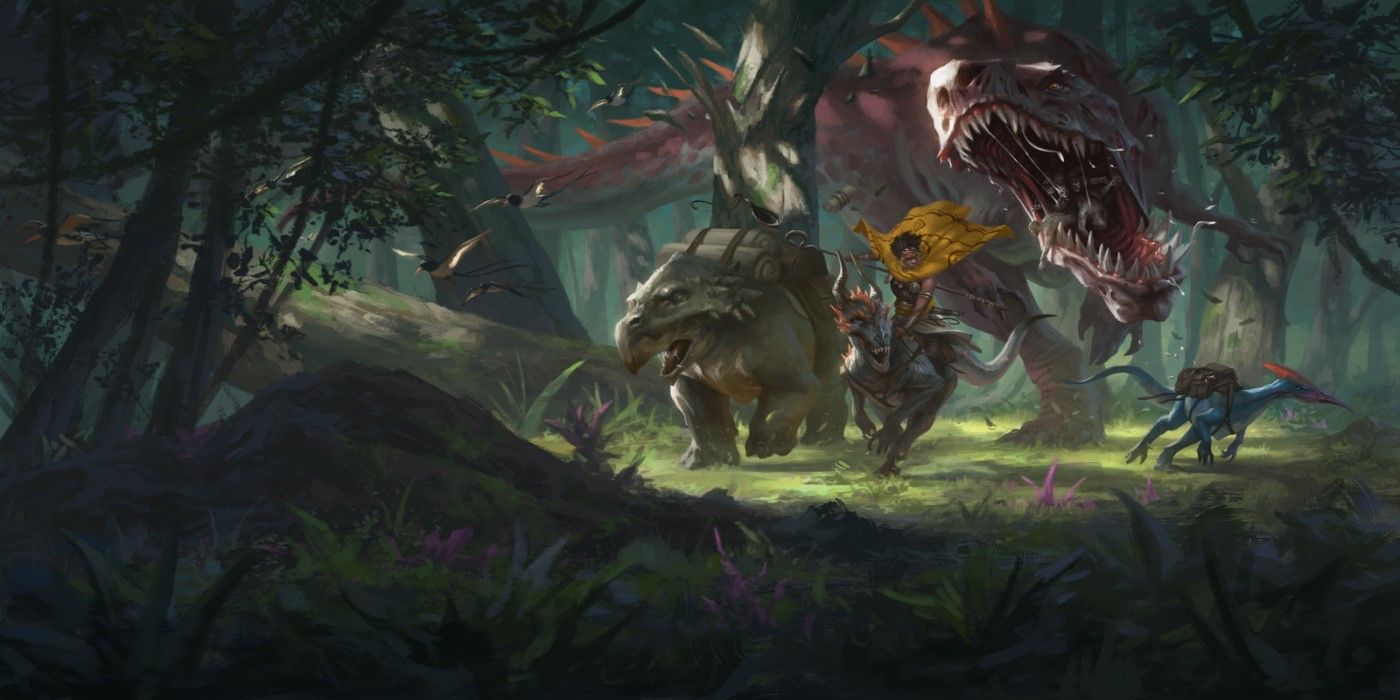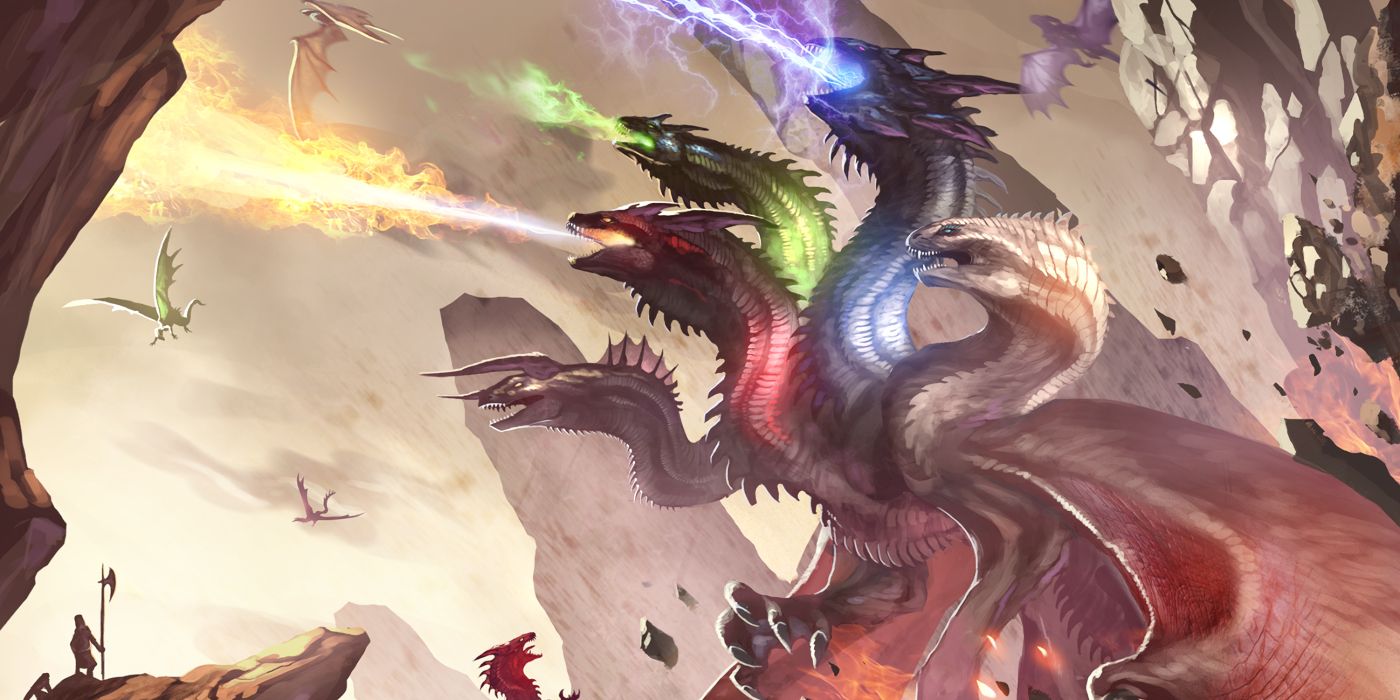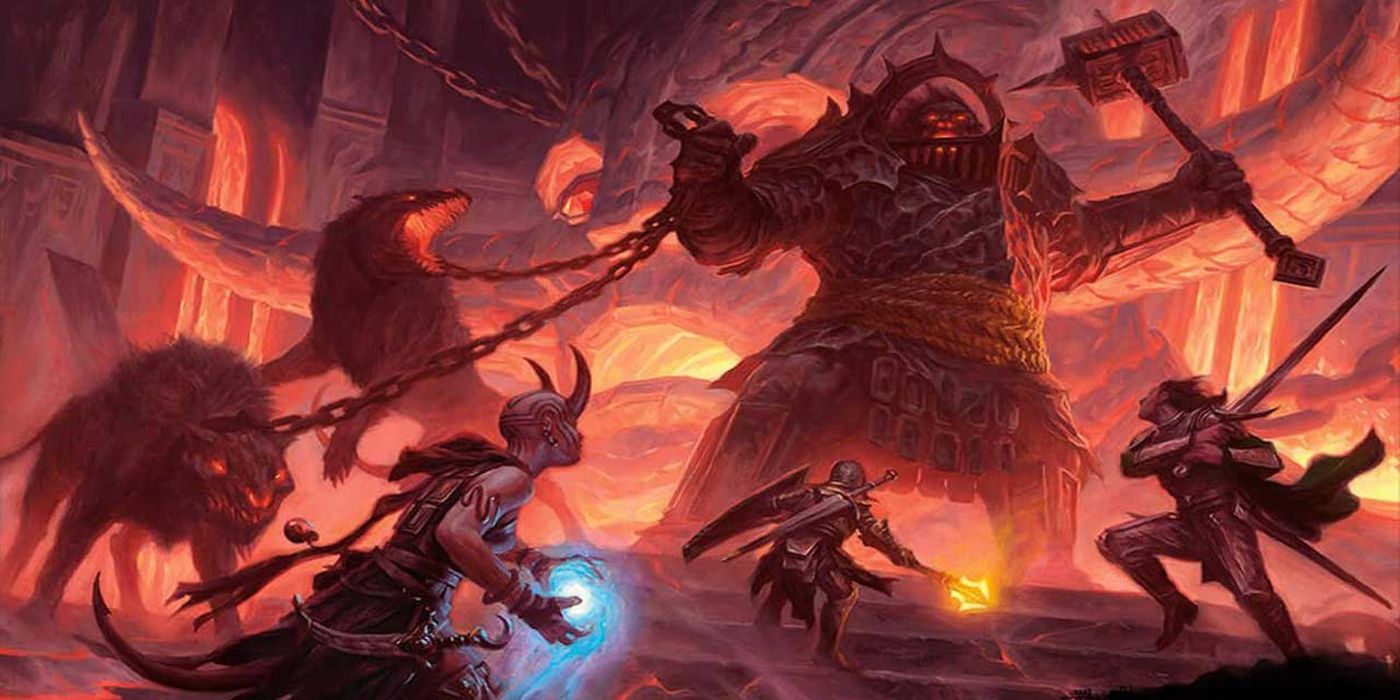Dungeons and Dragons Fifth Edition, the latest version of the quintessential tabletop series from Wizards of the Coast, was designed to make tabletop gaming more accessible, while still allowing veteran players the depth of customization they craved. Because of this, D&D 5E contains a handful of systems that allow an incredible range of choice, but can also be easily ignored if a player is looking to keep things simple.
One of these systems is Feats, unique powers and abilities that can chosen every few levels in place of a straight improvement to a character's Ability Scores. All classes gain the chance to make an Ability Score Improvement or take a Feat at 4th, 8th, 12th, 16th and 19th level, while the Fighter also gets to make the choice at 6th and 14th level, and the Variant Human racial option begins with a free Feat at level 1. This may seem like a lot of opportunities at first glance, but given that a D&D campaign that plays once a week can very easily take several years to go from 1st to 20th level, choosing Feats is never going to be something that players do frequently.
As the only resource that all classes have free access to, there are rather a lot of Feats to choose from, which can lead to many players looking at the wall of choice, despairing at the sheer size of it and opting instead for the safe, but boring, Ability Score Increase. It's hard to warn against this route, as it's entirely possible for a player to pick a Feat that does absolutely nothing for their character, or even works against them. Despite this, there are a few Feats that every player should keep in mind when planning a character, Feats that can not only improve their abilities but also open up dramatic new play-styles.
Polearm Master
Good for: Anyone planning to be in melee who has proficiency in the Glaive, Quarterstaff, Halberd or Spear.
Bad for: Ranged characters, Spellcasters, shield users.
The Polearm Master Feat stands out from the crowd by virtue of its ability to completely change the way a character is played, often making for a more exciting and dynamic martial experience. The Feat is divided into two separate bonuses, with the first applying to only the Glaive, Quarterstaff, Halberd and Spear, while the second also applies to the Pike.
The first of these bonuses allows a player with the Feat to make a second, smaller attack as a Bonus Action after their main attack with one of the listed polearms. This is equivalent in power and versatility to a character using the Two-Weapon Fighting combat style, which for a lot of classes would require an entire Multi-class to acquire.
The second bonus is even more interesting, allowing the character to make an attack against an approaching enemy. This adds an extra layer of tactical decision-making to a martial class, something they can often lack. Positioning becomes key, and standing in the correct place to intercept an enemy and cut them down on their own turn can be incredibly satisfying.
Sharpshooter
Good for: Ranged Characters of all kinds, especially with a supportive party.
Bad for: Melee characters, Spellcasters.
On the face of it, the Sharpshooter Feat can seem a little unimpressive. Divided into three separate bonuses, the Feat is themed around making long-range precision attacks. The first two bonuses play into this heavily, increasing the effective range of weapons and allowing players to ignore cover to a degree. It's the third bonus however, that can really turn a ranged plinker into a devastating sniper.
The third bonus grants the ability to sacrifice accuracy for a massive boost to damage. In a vacuum this doesn't seem like a very good trade-off, there being little damage to boost on an arrow that whizzed off into the undergrowth like a dog chasing a squirrel. With the addition of other bonuses however, such as Advantage, suddenly the trade looks a lot more appealing. A Sharpshooter can gain Advantage in a variety of ways, whether Stealthing in the back-lines, debuffs applied by a friendly caster, or buffs from an even friendlier one. With the roughly +4 numerical bonus that Advantage gives, suddenly the Sharpshooter can be tripling their damage on a shot that's barely less accurate than their default attack.
War Caster
Good for: All Spellcasters, and Martial/Magic hybrids in particular.
Bad for: Any character without access to spells.
There's nothing more annoying for a player than spending a top-level spell slot on a terrifying whirlwind of arcane devastation, only for it to fizzle out after one turn because a Goblin stabbed their Wizard in the shin and she forgot the magic words. Fortunately, the War Caster feat has the solution, giving advantage on all Concentration checks made when taking damage. As Concentration is the mechanical measure of a Spellcaster's ability to keep their focus in the chaos of battle and is based on the Constitution Ability, not a common pick for most casters, this can be absolutely essential for almost any spell-slinger.
Where the War Caster Feat really shines however, is when used by a Spellcaster who actually wants to be in the thick of the action. The Feat's second bonus gives the ability to cast Somatic (Gesture) Spells without needing a free hand, giving any prospective melee/magic character the ability to dual-wield, or pick up a shield to boost their AC, without affecting their spell-casting. The second bonus is also strong in close-range, allowing the War Caster to cast a spell on any enemy that provokes an opportunity attack from them. Given the vast range and diverse uses of Fifth Edition's spell-lists, this bonus allows for myriad tactical opportunities.
Lucky
Good for: Everyone
Bad for: No-one
No other Feat epitomizes the best of feats quite like Lucky, offering a powerful bonus applicable to any class in any situation. Everyone who has played DnD has, at one point or another, experienced that awful moment when a vital roll goes completely wrong: A failed Stealth check wakes the dragon, a missed attack gives the vampire time to escape, or a poor Persuade roll fails to seduce the bar-maid. In these situations, the Lucky Feat shines, giving three luck points a day, which can be used at any time to essentially add Advantage to a roll, even after the first die has been rolled (but before the DM has announced the outcome). That means three second-chances a day, three opportunities regardless of the situation to ignore a terrible roll and try again, all from a single Feat.



